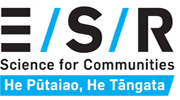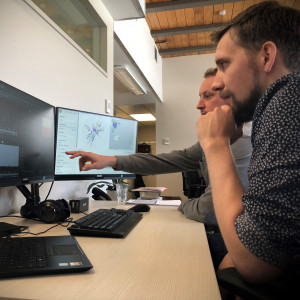A collaboration between ESR and Otago University has been allocated $600,000 from the Ministry of Business, Innovation and Employment (MBIE) COVID-19 Innovation Acceleration Fund.
The grant will allow an international team of scientists to sequence the genomes of all of New Zealand’s positive COVID-19 cases and track how the virus spread across New Zealand.
Dr Jemma Geoghegan, a Senior Lecturer from the University of Otago’s and an Associate Senior Scientist at ESR will lead a 12-month project along with ESR lead bioinformatics researcher Dr Joep de Ligt. The aim of the project is to generate virus genomes from all of New Zealand’s confirmed positive cases.
The team consists of 14 world-leading experts in virus evolution and phylodynamics will create a user-friendly interface that will be available to the public online and will track and explain the evolution, epidemiology, population dynamics and transmission chains of COVID-19 in New Zealand.
Dr de Ligt, Dr Una Ren, Ms Lauren Jelly and Mr Matt Storey, based at ESR, were the first to sequence the genome of SARS-CoV-2 in New Zealand, directly from the country’s first patient sample. They will lead the genomic sequencing and assembly.
Dr de Ligt says as part of ESRs strategy, it has invested in genomics capability and technology to support infectious disease surveillance and genomics research.
“The use of genomics in surveillance has been done in close collaboration and support of the Ministry of Health. The scale and speed of this pandemic developed and needed to be tracked led ESR to invest in additional technology to leverage the strengths of both Illumina and Oxford Nanopore sequencing to increase capacity to over 200 genomes a week.”
Under Ministry of Health contract ESR has processed urgent samples, as determined by epidemiological investigations and public health professionals within 48 hours. The project will focus on a wider investigation of all genomes that arrived in New Zealand. This will provide a valuable data source for future monitoring and in the potential event of second wave.
“When combined with geographic information we will be able to reveal pathways of viral spread, including from the global population, domestically and at the community level,” Dr Geoghegan says. “These results can be used to direct public health interventions such as quarantine, highlight transmission hotspots to target community testing and assess the impact of other interventions such as travel restrictions and border closures.”
Analyses of genomic data have played an important role in tracking the epidemiology and evolution of the virus in real time, and there has been an enormous global effort to contribute and share genomic data to inform local authorities and the international community about key aspects of the pandemic.
This has led to a greater understanding of different COVID-19 outbreaks, and its spread.
Dr de Ligt says the project will also enable scientists to understand how to manage and reduce the impact of outbreaks on vulnerable communities. Data from Māori communities will be incorporated into the project results, under the guidance of Māori biostatistician Andrew Sporle.
Those supporting the project include public health and infectious disease epidemiology experts Professor Colin Simpson of Victoria University of Wellington and Professor Nigel French of Massey University. Dr Sarah Jefferies and Dr Sue Huang of ESR will guide the interpretation of the phylodynamic analysis.

